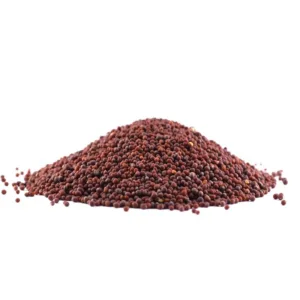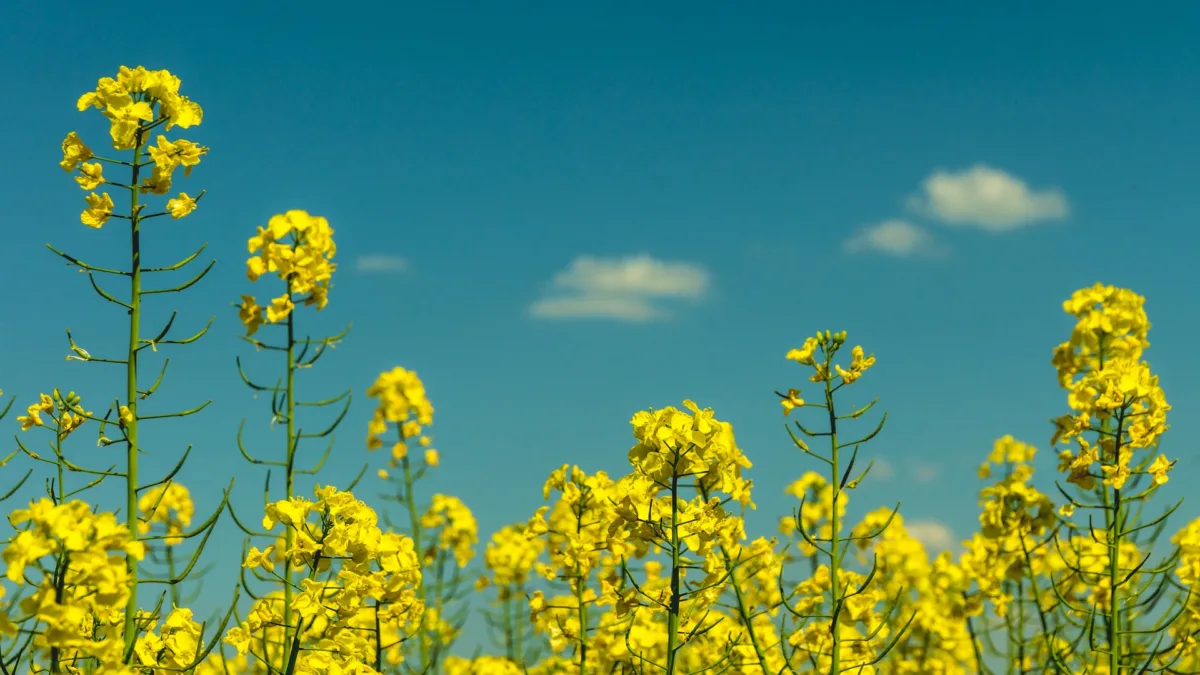Did you know mustard isn’t just a condiment but a gorgeous addition to your garden? While basil might be the go-to herb for many and we have a good guide on how to grow basil, let’s shake things up a bit! Mustard is an easy herb to grow and a very rewarding one as well. It’s flowers are just beautiful while they bloom and you can very easily cook your own condiment out of it’s seeds. So, let’s walk through the process of growing your own mustard.
Selecting the Right Mustard Seeds

You can simply use the seeds from the supermarket. Usually you buy those for your kitchen, but they are perfectly fine to grow your mustard. The darker the seeds are the spicier they usually are. This is a good indication, which variety you want to choose.
Black seeds are usually used as a spice, while yellow and brown varieties are used to make mustard. Brown mustard seeds come from the brassica juncea plant. Usually we refer to it as Indian or Chinese mustard. Yellow mustard derives from a different plant: Sinapis alba. Yellow and brown mustard are related, but not as close as one would think.
Creating the Perfect Mustard Environment
Mustard is not very demanding when it comes to soil and such things. It pretty much grows everywhere. But if you want to ensure to get lots of seeds, you should grow it in a soil with a pH of 6 or more. The ground should be well drained and rich. You can use 5-10-10 fertilizer. Work it 2 to 3 inches into your soil just before sowing. But even without fertilizer your mustard should just do well.
Mustard likes the cold weather. Even a little frost does not harm the plant. But you should choose a sunny or part shade spot in your garden.
Sowing the Mustard Seeds
Most gardeners sow mustard as a short-term fall cover crop. But you can also start sowing in early spring, just before the last frost. The seeds should be placed 2 inches apart in a 1.5 inches deep hole. Once they start to grow, you should thin them out to around 5″ to 6″ in each direction. This gives them the space they need to thrive.
Nurturing Your Mustard Plants
Is is not often the case, but with mustard, you do not really fear insects and diseases. Mustard is simply not too popular among the pests, which usually invade our gardens. It takes between 30 and 60 days until your mustard plants go to seed, depending on your variety and climate. The hotter your weather, the quicker they seed.
After some time smooth long pods will emerge, in which the seeds ripen.
Harvesting: More Than Just Seeds
Every part of the mustard plant is a culinary treasure. The young leaves add a peppery zest to salads, while the mature leaves are perfect for stews, especially with ham or bacon. And then there are the seeds, the stars for your homemade mustard!
When to Harvest Mustard Seeds
Check the seed pods. Immature seeds are green. Wait until they get the right color. Depending on your variety yellowish white to black. The best way is to let the plants dry out. This means, you might loose quite some seeds, which fall to the ground, but then you know, they are ready. And those fallen seeds will germinate for the next season!
Its a good idea to place a big sheet under or nearby the plants. Now you can carefully cut the plant and place it one the sheet. You will notice, how seeds are falling, but with the sheet you easily catch them. It’s best to do this kind of work during the day, when everything is dry.
Once you have all plants harvested fold the sheet multiple times and start to crush the plants. Now all the seeds should be inside the sheet and you can start to separate the plant parts from the seeds.

